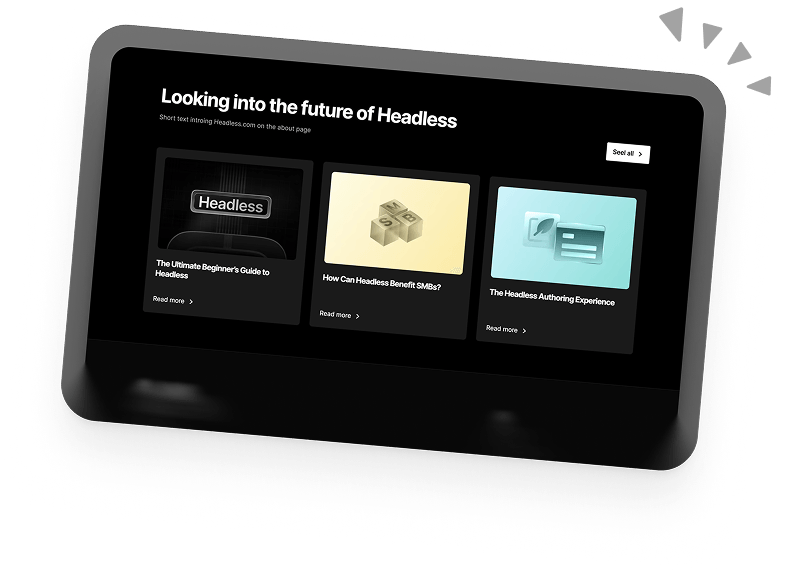Brand Inconsistency Hurting Your Conversions? Why You Need a Component-Based Design System
Is inconsistent branding hurting your conversions? If your users face a disjointed customer experience, a component-based design system might be the single source of truth your team needs.
Have you ever been on a site that felt…off? As you navigate through the site, some pages feel sleek and modern while others seem like they’ve been lifted from another site entirely. Buttons change colour, fonts shift, and the overall experience is just plain disjointed.
This kind of brand inconsistency and disjointed user experience can wreak havoc on a business, eroding customer loyalty, frustrating your team, and ultimately, hurting your bottom line.
The Real Impact of Brand Inconsistency
It’s easy to dismiss design inconsistencies as “minor details,” but the cumulative effect of these details is profound.
Losing customer trust & loyalty
Imagine walking into a high-end store where every aisle looks different, and the staff wear different coloured uniforms. You’d question their professionalism. The same applies online. Inconsistent branding makes your business appear less credible and professional. Cohesive branding across your channels builds trust and loyalty with your customers and, consequently, boost your revenue. A study by Marq found that consistent branding across all channels can increase revenue by 10-20%.
Customer Churn
Users expect a seamless journey. If your site has messy website navigation or an unpredictable interface, they’ll leave. In fact, one report found that 88% of online consumers are less likely to return to a site after a bad user experience. That’s nearly 9 out of 10 potential customers you might be losing!
Internal Inefficiency, a.k.a. “Design Debt”
The problem isn’t just external. Without clear guidelines and reusable assets, your internal teams get bogged down building everything from scratch. This leads to a “design debt” where teams spend too much time creating new content and patching inconsistencies. A report by Marq found that 64% of creative teams spend at least 5-10 hrs per week on mundane content and edit requests. When teams are forced to constantly reinvent the wheel it wastes valuable time and slows progress.
What is a Component-Based Design System? (And Why You Need One)
So, how do you combat this chaos?
Enter the component-based design system.
At its core, a design system is a comprehensive set of standards, reusable components, and guidelines that ensure consistency across all your digital products.Think of it as the ultimate toolkit and instruction manual for your brand’s digital presence.
Unlike a static style guide a design system is dynamic and living. It provides a single source of truth for every element, from colours and typography to intricate UI patterns like navigation menus and forms. These elements can be reused and rearranged to create new content that always stays aligned with your brand.
How Components Ensure Brand Consistency and Drive Efficiency
- Consistency: A design system ensures that whatever page or channel a user is on, the experience will feel cohesive and unmistakably yours.
- Faster Development: With a library of reusable UI components, designers and developers no longer have to build from scratch. A study by Sparkbox found that a standard form page was 47% faster to develop when using a design system.
- Empowered Teams: Using a design system streamlines design workflows. According to Figma’s internal studies, designers become 34% more efficient when working with a design system. This frees up creative energy for solving bigger problems, rather than getting bogged down in repetitive tasks.
- Scalability for Growth: As your company grows, so too does your digital presence. A design system provides the foundation for sustainable, efficient growth, allowing you to launch new products and features without sacrificing consistency.
The Business Value of Design
Investing in consistent branding and design creates tangible impact for companies. McKinsey & Company’s research on The Business Value of Design found that companies excelling in design achieve 32% higher revenue growth and 56% higher returns to shareholders than their peers.
A real-world example is our project with WPEngine. As part of reworking their site, we implemented a composable design system, which not only enabled more consistent branding, but also allowed WPEngine to implement a brand redesign in a matter of weeks. After the site rework, WPEngine experienced a 33.5% boost to their lead generation and 30% increase in transactions.
Ready to Fix Your Inconsistent Branding?
If your brand suffers from inconsistent branding and a disjointed customer experience, it’s time to consider a solution that brings order to the chaos. A component-based design system is a high-impact, fundamental shift in how you build, maintain, and scale your digital products.
Drewl specialises in helping businesses like yours implement enterprise UX solutions and build scalable web design infrastructures. We can guide you through a brand consistency audit and help establish the single source of truth that your team deserves. Contact us today to see how a composable design system can boost your conversions and streamline your workflows.
Book a 30-min Introduction Call
Let's jump on a quick intro call We'll break down your project, and pinpoint exactly how we can help.



Our clients  Holaa! love working with us see their stories below!
Holaa! love working with us see their stories below!






